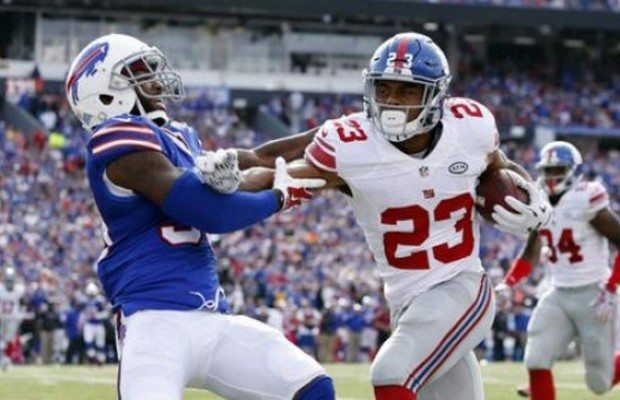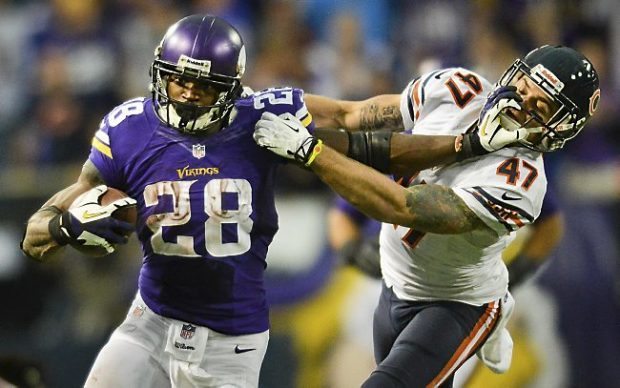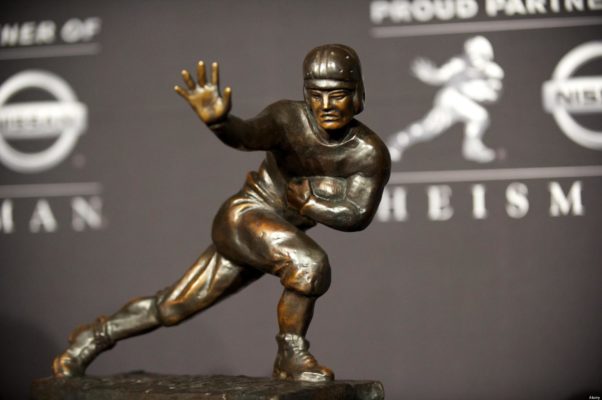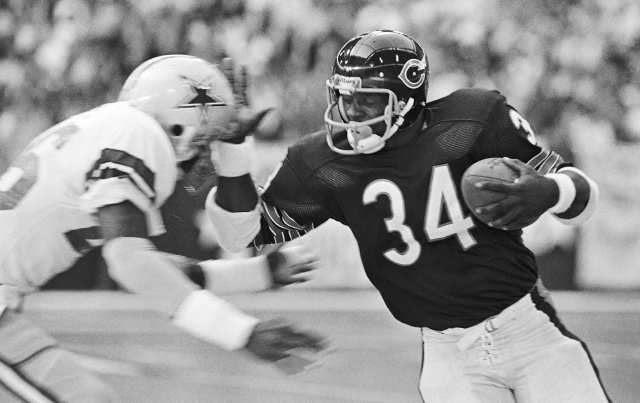The Art of the Stiff Arm

There are few players who show more physical toughness than a hard-charging running back.
Running backs attack a defense on a number of levels, grinding out the clock, tiring defenders out late in games, gobbling up short yardage and hitting lightning-quick home run touchdowns.
A good running back attacks with his legs, using quickness, agility and dexterity. He also attacks with his shoulder, battering would-be tacklers away. He attacks with his eyes, using an often uncanny field of vision to elude defensive players.
For years, there has been another technique that running backs have utilized. Known officially as the stiff-arm fend – or simply the stiff arm – it has fallen out of favor by and large across the game.
The same motion being depicted on the Heisman Trophy is no longer widely used in the sport. Still, those who still use the stiff arm and benefit from the separation it causes regularly wreck havoc on the gridiron.
“A good stiff arm is all about the timing,” Houston Texans running backs coach Charles London said. “A lot of guys who try to use it nowadays just don’t really understand how to do it. If they stick their arms out too soon, they just get dragged down by it. It is all about striking at the right time.”
London, a collegiate tailback at Duke University, has been coaching runners since graduating in 2005. Along the way, he has seen some of the best running backs use the stiff arm with great success.
“Guys nowadays like Arian Foster here in Houston and Adrian Peterson probably use it the best these days,” said London. “Back in the day, I remember seeing the footage of guys like Earl Campbell and Walter Payton. I don’t think anybody threw better stiff arms than those guys.”
Like many fundamentals of football, it is never too early to someone how to use a stiff arm. Some of the best, according to London, have been taught at a very early age. Some as early as Pee Wee or Pop Warner football.
“I think if a guy isn’t using the stiff arm at a young age, it’s very difficult for them to pick up as they get older,” London said. “Not many guys have come and asked me about it, but when they have I like to tell them to imagine just a quick, short six-inch punch right to the chest or shoulder pads to get separation. If they do that at the right time, it’s gonna be very hard for somebody to bring them down.”
The stiff arm is one of the few instances in football where a player can deliberately make contact with another player’s facemask and not get called for a foul. As Bill LeMonnier explained in a recent Ask the Official, any player possessing the football – a runner or receiver after a catch – may use an open hand to ward off a defender trying to make a tackle.

Vikings running back Adrian Peterson takes the ball for 21 yards as he stiff arms Bears free safety Chris Conte (Pioneer Press: Ben Garvin)
The thinking behind the rule is that since a runner is limited in his ability to ward off defenders because his other hand is securing the football. The ball-carrier, though, cannot strike the helmet or grab and/or twist the face mask of the defender.
Some other points to remember when teaching the stiff arm:
- Along with being illegal, grabbing the facemask during a stiff arm can lead into injury if the defender jerks away or if the fingers get stuck.
- Stiff arms are best utilized during the runner’s change of direction and while the defender has already committed to the tackle. A defender still in pursuit will simply grab the arm and pull the runner down.
- Secure the ball with the off arm furthest from the would-be tackler.
- If the defender defeats the stiff arm, get the second arm back around the ball to secure it as the pair go to the ground.

